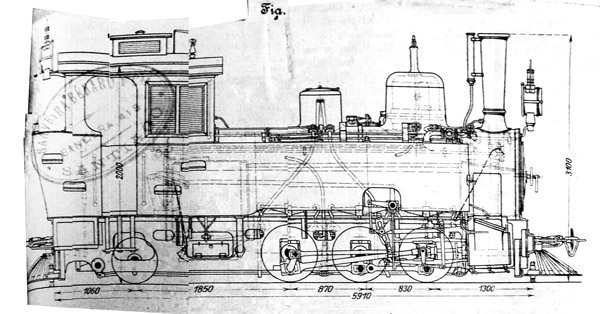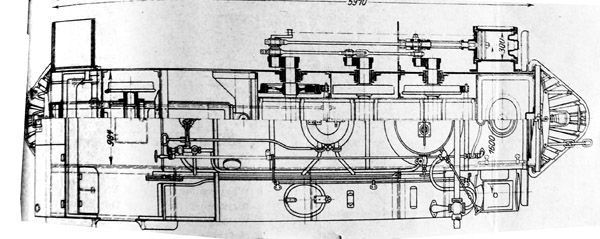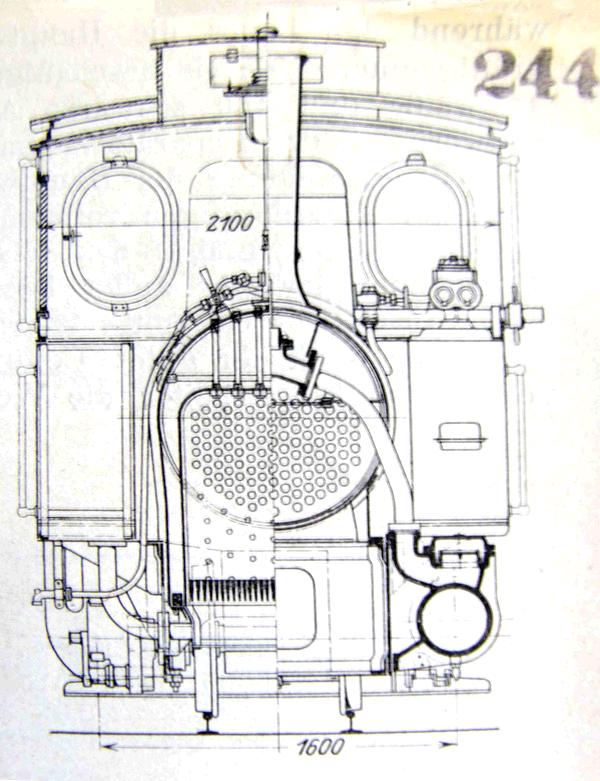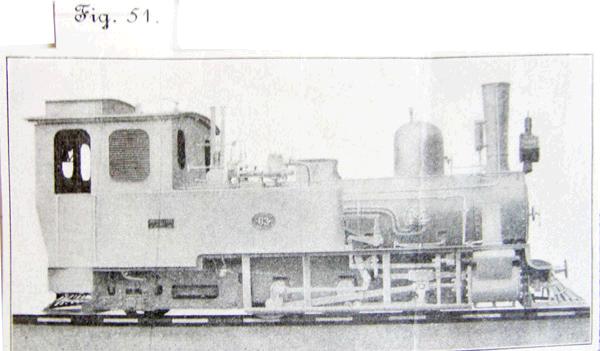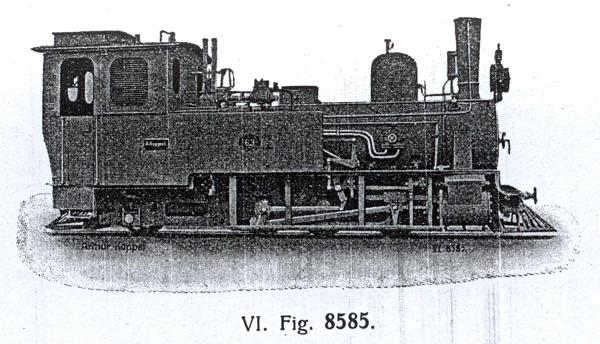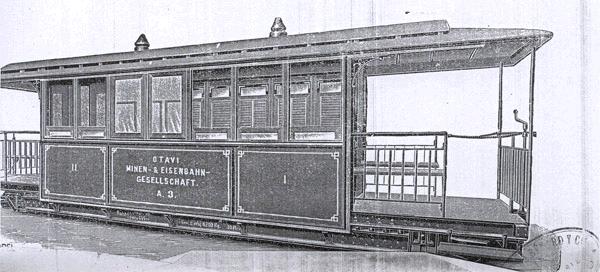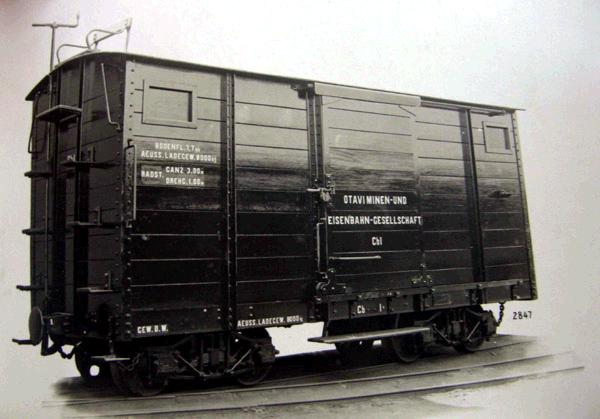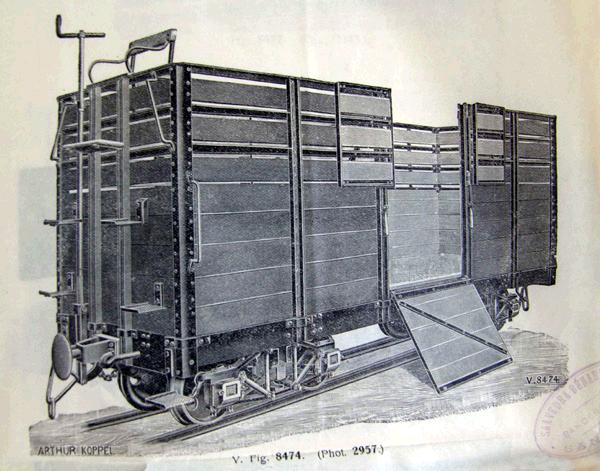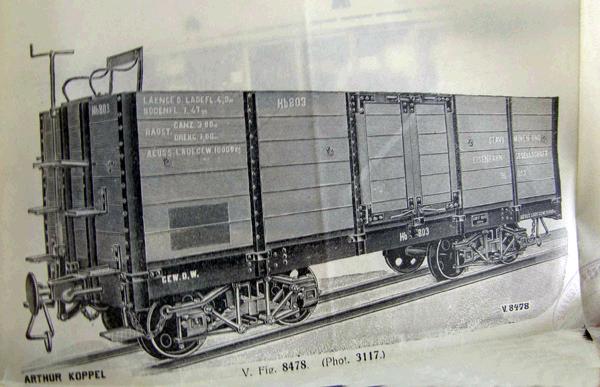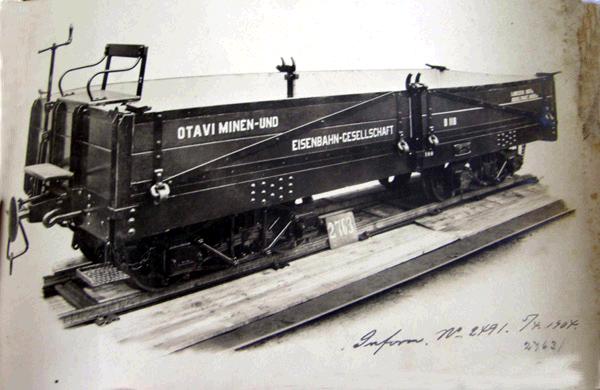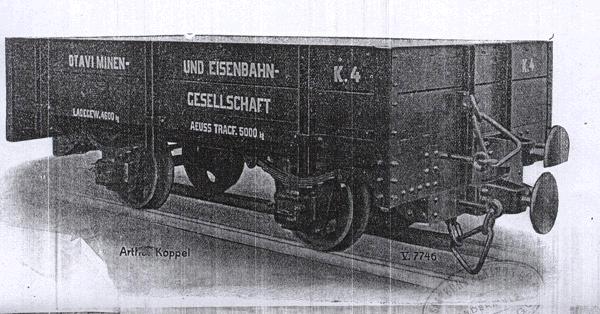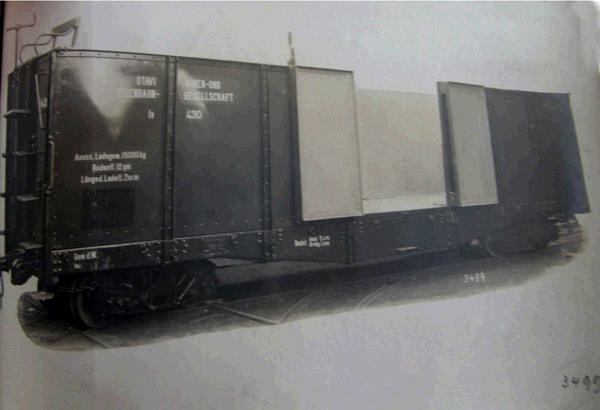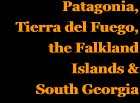 |
 |
 |
|||||||||||||||||
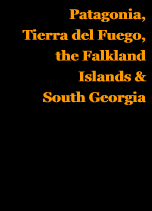 |
|||||||||||||||||||
 |
|||||||||||||||||||
Appendix 8 The acquisition of rolling stock for the FC Puente Alto - El Volcán These documents have very kindly been forwarded by Señor Derek Hyland of the Ave Fénix group attempting the restoration of Arnold Jung 0-6-2T no. 4 'Panchita' at Melocotón on the erstwhile Puente Alto to El Volcán military railway outside Santiago. Since the choice of locos and stock by the DOP for this railway set a precedent for later orders for the other narrow gauge branches, the process and designs chosen may be of interest. 1 “…Acta In Santiago on the first day of October nineteen hundred and eight, before the Inspector General of Railways, who signs below, and the Engineers-in-Chief of the Construction and Rolling Stock Sub Sections, Messrs Teodoro Schmidt and Julio Lyon, respectively, proceeded to the opening of the proposals for the provision of rolling stock of 60 cm gauge intended for the San Bernardo to El Volcán Railway. The following submitted proposals: Señores Vorwerk i Cía., offer two locomotives at a price of $22.970 gold of 18 pence each, loaded on wagons at Valparaiso. The receipt of a deposit of $4.600 gold of 18 pence to the order of the Director de Obras Públicas is included. Messrs Saavedra Benard i Cía. offer two locomotive at a price of $16.675 gold of 18 pence each, and the coaches and wagons asked for at the following prices: composite passenger coach for 1st and 2nd class at a price of $8.790 gold each; covered vans on two bogies and eight wheels at a price of $1.995 gold each; open livestock wagons on two bogies and eight wheels at a price of $1.995 gold each; high sided open wagons on two bogies and eight wheels at a price of $1.880 gold each; low sided open wagons on two bogies and eight wheels at a price of $1.745 gold each; low sided open wagons on four wheels at a price of $975 gold each. All material delivered towards the end of January 1909. This is proposal A. There is also an offer B as follows: two locomotives at a price of $16.675 gold each; a 1st class passenger coach on two bogies and eight wheels at a price of $9.215 gold; one composite passenger coach on two bogies and eight wheels at a price of $9.095 gold; one 2nd class coach on two bogies and eight wheels at a price of $8.810 gold; two 3rd class passenger coaches at a price of $8.300 gold each; two luggage and postal vans at a price of $2.790 gold each; two covered vans at a price of $2.230 gold each; two open livestock wagons at a price of $1.995 gold each; four flat wagons at a price of $1.610 gold each; two brake vans at a price of $1.550 gold each; four open wagons at a price of $975 gold each; four open wagons at a price of $1.095 gold each (with a screw brake); two high sided open wagons at a price of $1.980 gold each; one high sided open wagon at a price of $3.900 gold. All this material would be loaded on to wagons at Valparaiso and would be delivered within four months. 3) Fundición i Fábrica LA UNION offer to deliver one 1st class coach at a price of $11.346 gold; one composite coach at a price of $10.851 gold; one 2nd class coach at a price of $10.252 gold; two of 3rd class at a price of $7.629 gold each; two luggage and postal vans at a price of $7.428 gold each; two covered vans at a price of $2.953 gold each; two open livestock wagons at a price of $2.953 gold each; four flat wagons at a price of $2.652 gold each; two brake vans at a price of $1.456 gold each; four open wagons at a price of $1.048 gold each. The prices include loading of the material on wagons at Valparaiso within a space of six and a half months. It is accompanied by a receipt for $9.208 gold of 18 pence deposited…” 2 Sir The Department for which I am responsible undertook a study of the Puente Alto to El Volcán railway, of 60 cm gauge, to determine what would be necessary for its working, and to determine if the necessary stock would be available, in view of the fact during next January 13 km of the line will be completed to a state in which it would be allowable and be advisable to work it. Public offers have been invited for the provision of the necessary locomotives and rolling stock in accordance with the conditions and specifications established by the Inspección General de Ferrocarriles. I have the honour to attach the offers and present for your consideration the particular report by the said Inspección. The proposed locomotives, passenger coaches and goods wagons, with their respective prices are those detailed in the attached table: Locomotives: Of the three who submitted proposals only two of them offer locomotives. 1st Messrs Saavedra Benard & Co, according to their proposals A and B offer to deliver the two engines with hand and compressed air brakes, at a price of $16.675 gold of 18 pence each. 2nd The same house, according to their proposal C offer to deliver two locomotives equal to the previous, but with Westinghouse brakes and hand brakes, at a price of $17.980 gold of 18 pence each. 3rd Messrs Vorwerk & Co offer two locomotives conforming to the specification, at a price of $22.950 gold of 18 pence each. Considering these three proposals, I consider that the most advantageous and advisable for the conditions is the second, that is, proposal C of Messrs Saavedra Benard & Co, with a reduction due to the cost of these brakes replaced by Westinghouse brakes. Under equal conditions the price of these locomotives, not counting any discount in respect of the brakes, is $4.970 gold less than the one in the Messrs Vorwerk & Co proposals. Coaches: There were four proposals presented for coaches, that is: one from the Fundición i Fábrica de La Unión, formerly Hardie i Cia., and three from the house of Saavedra Benard & Co, according to proposals A. B. and C. noted in the table. 1st The Fundición i Fabrica de La Unión offer to build the coaches in conformity with the specifications within a period of six and a half months, that is to say two and a half months more than the period indicated for delivery. It is worth noting that, given the general dimensions which they propose for this stock, it would be difficult to ensure its stability at the maximum speed of the trains, since its width and height do not conform to what is generally accepted for 60 cm gauge. 2nd Messrs Saavedra Benard & Co in their proposals A. B. and C. offer coaches of the type employed in the Otavi Railway, being in the form of enclosed tramcars, with large platforms with seats for passengers inside and out. The coaches in proposals A. and B. have hand brakes, and the number of seats is less than that fixed in the specifications. The coaches in proposal C. have Westinghouse brakes, according to the declaration made by the proposer in the accompanying letter. The number of seats is that required by the specifications. Considering this part of the proposals I consider that, even if the coaches do not meet all the requirements specified, proposal C of Messrs Saavedra Benard & Co does meet them in respect of delivery. Only in the event of accepting athe reduced number of seats would proposal B of this house be acceptable, and in the case of the coaches it would be necessary to provide Westinghouse brakes at a price, according to the letter, of $400 gold per coach. Wagons: Wagons were offered in four of the proposals as noted in the table. 1st Proposals A and B of the house of Saavedra Benard & Co. The wagons are equal in one or the other, with the exception that in the first the flat wagons are open wagons. All of them have a hand brake, but a Westinghouse brake could be fitted at a price of $400 gold per wagon. 2nd Proposal C by the same house, for similar wagons with Westinghouse brakes, according to the accompanying letter, each type of wagon has either sides of wood or of sheet steel. This proposal is the only one which gives data relating to the weight and the carrying capacity, which, although less than that noted in the specifications, is acceptable. The advantage of proposal B over proposal C can only be determined if one adds the cost of the Westinghouse brakes to the wagons noted in proposal B, and this results in less of a difference. 3rd Proposal by the Fundición i Fábrica de La Unión which offers to build the wagons according to the specification in a time-scale of six and a half months. The prices are in general higher than those in the previous proposals. Analysing the proposals in relation to wagons, I consider that proposal C of Messrs Saavedra Benard & Co is the most satisfacory one . . . 3 “Seeing the proposals presented for the provision of locomotives and rolling stock needed for the working of the Puente Alto to El Volcán railway in conformity with the conditions and specification fixed by the Dirección de Obras Públicas; and considering that, of the said proposals, the most advantageous and advisable in its conditions is that designated C of Messrs Saavedra Benard & Co. DECREE: 1. Accept the proposal made by Messrs Saavedra Benard & Co for the provision of the following stock which is needed for the working of the Puente Alto to El Volcán Railway for the price of one hundred and twenty nine thousand seven hundred and eighty eight pesos ($129.788) of 18 pence from which must be deducted the value according to account of two Westinghouse brakes and hand brakes for all the material: Two locomotives at seventeen thousand nine hundred and eighty pesos ($17.980) of 18 pence each; One 1st class coach, twelve thousand eight hundred and fifty pesos ($12.850) of 18 pence; One 1st & 2nd class coach, twelve thousand six hundred and seventy five pesos ($12.675) of 18 pence; One 2nd class coach, twelve thousand two hundred and seventy five pesos ($12,275) of 18 pence; Two 3rd class coaches, eleven thousand six hundred pesos ($11.600) of 18 pence each; Two luggage and postal vans, three thousand one hundred and fifty nine pesos ($3.159) of 18 pence each; Two covered vans, two thousand five hundred and ninety pesos ($2.590) of 18 pence each; Two open livestock wagons, two thousand three hundred and eighty pesos ($2.380) of 18 pence each; Four flat wagons, two thousand and thirty pesos ($2.030) of 18 pence each; Two four-wheel brake vans, one thousand six hundred and eighty five pesos ($1.685) of 18 pence each; This material must be supplied within the space of four and a half months, measured from the date of this present decree. 2. The Director of the Treasury is authorised as representative of the Government to sign with the authorised representative of Messrs Saavedra Benard & Co the public document to which this decree will be reduced. . .
4
5 Please note that the drawings and photos below have been sourced from distorted photos of the originals. Care should be taken in deriving any measurements from them. TECHNICAL SPECIFICATIONS FOR THE ARTHUR KOPPEL LOCOMOTIVES AND ROLLING STOCK PRESENTED IN THE TENDER 1. Tank locomotive on four axles comprising 3 coupled axles and one free axle for 600 mm gauge in accordance with the attached extracts No 48 to 51 in all ways complying with the requirements.
[These drawings show the Arnold Jung locos as delivered to the Otavi Railway in German South West Africa. The machines eventually ordered for Chile had minor differences, such as the cab windows, and a Westinghouse brake pump fitted to the RHS of the smokebox with associated pipework and air reservoirs.]
[As mentioned above, please note that the following photo does NOT show the locos that appear in the drawings.]
The principal dimensions of these engines are: Diameter of cylinders 300 mm Stroke of piston 350 mm Diameter of driving wheel 700 mm Diameter of carrying wheel 550 mm Rigid wheelbase 1.700 mm Total wheelbase 3.550 mm Heating area 46 m2 Grate area 8.82 m2 Boiler pressure 12 atmospheres Water capacity (in addition to the 1.500 litres in the boiler) 3.500 litres
Capacity for coal 1.000 kilos
Weight in service 22 tonnes
Weight empty 16 tonnes
Length 7.000 mm
Width 2.300 mm
Height 3.100 mm
Tractive effort 2.700 Kg.
Capable of hauling 47 tonnes on 3% grade with curves of 50 m.
Height of coupling above the top surface of the rails 550 mm. Materials All parts of the locomotives will be made of material of first quality in accordance with the legal requirements for the German State Railways and each piece will be the subject of official testing. Boiler The plates will be 13 mm thick for the curved plates at the top, on the side walls and the ends, and 22 mm for the other curved plates, all carefully riveted together. All holes will be drilled, which offers the assurance that, right from the beginning, there will be no hairline cracks around the edge of the rivet holes, which frequently happens when the holes are punched. Two injectors will be provided, each of which is capable of replacing the water evaporated. The firebox, including the struts, will be of copper. Valve gear (Walschearts) The component parts will be made with special care so that in operation they are the most perfect and secure, not requiring adjustment of any kind. Brakes The locomotives will be provided with Exter system brakes, with facilities for adjustment, operating on four wheels, and a compressed air brake, for downhill running. Greasing The grease reservoirs will be of large size to ensure the constant and perfect greasing of the parts subject to friction. General observations The locomotives will be provided with all the safety gear needed as well as whistle, sander, ventilator, pressure gauge, etc Trial The boiler before mounting will be tested cold by means of hydraulic pressure. Additionally the locomotive will undertake a test run in the factory; a certificate will be issued for both tests, which will be sent along with the drawings of the locomotives The price of each complete locomotive includes delivery dismantled and crated and loaded on wagons of the State Railway at Valparaiso for $16.675 gold of 18 pence. [As mentioned above, please note that the following photo does NOT show the locos that appear in the drawings.]
2. Passenger coaches, composite for 1st and 2nd class on two bogies and eight wheels conforming to photograph No 1765 attached.
[The coaches ordered by the DOP were based on the same chassis and running gear, but were fully enclosed for operations in a colder and wetter climate. However, they still bore the double roof that had been specified for operations in the Kalahari!] These coaches can accommodate 12 people in 1st class (8 inside and 4 on the platform) and 16 people in 2nd class (12 inside and 4 on the platform). To give the coach the greatest stability possible, and to reduce air resistance, two parts of the frames are filled with 1.200 kilos of concrete and iron, giving the floor of the interior compartments a height of 150 mm less than that of the platforms. The rigid wheel base is 1.000 mm, while the distance centre to centre of the bogies is 6.45 metres. The coach will be equipped with a hand screw brake, which will operate on the four wheels of one of the bogies. The weight of each coach will be 6.200 kilos. The price for each coach supplied dismantled and crated on wagons of the F. C. del Estado at the Port of Valparaiso will be $8.790 gold of 18 pence. 3. Covered vans on two bogies and eight wheels for 600 mm gauge and eight tons capacity, conforming to photograph Nº 2847. [Whilst the vans pictured have a tare weight of 4.4 tonnes and a capacity of 8 tonnes, those listed in a DOP stock list of 1914 have tare weights of 5 and 6.6 tonnes and capacities of 12 tonnes. It should also be noted that the brakeman's position pictured in each of the following photos would not have been necessary on the air-braked stock ordered for Chile.]
These vans have a sliding door on each side and at each corner high up a small sliding trap door. The chassis will be made of strong U-shaped steel members, covered with wooden planks 50 mm thick, while the side and end walls will be made of wooden planks 40 mm thick. The dimensions of these wagons are: Capacity of wagon 8 tonnes Length of wagon 5.000 mm Width of same 1.600 mm Height of same 1.900 mm Floor area of van 7.7 m2 Rigid wheel base 1.000 mm Distance centre to centre between bogies 3.000 mm Weight of wagon 4.400 kilos. Price of each wagon complete according to the description, loaded dismantled and crated on wagons of the F. C. del Estado at the Port of Valparaiso will be $2.230 gold of 18 pence. 4. Livestock wagons on two bogies and eight wheels for 600 mm gauge and 8 tonnes capacity in conformity with photograph Nº 2957.. [The livestock wagons that appear in photos of both the Chiloé line and the FC Puente Alto - El Volcán are longer than this, with three panels each side of a pair of side-hinged doors. They also are roofed, not surprisingly in a much wetter climate than these were designed for. However, whilst they also carry steel cross bracing to the bodywork, the channel shaped intermediate uprights are similar, suggesting that they may have come from the same builder.]
The wagons have a side door on each side which can be lowered. The chassis will be made of strong U-shaped steel members, covered with wooden planks 50 mm thick, while the side and end walls will be made also of wooden planks 40 mm thick. The dimensions of these wagons are: Capacity of wagon 8 tonnes
Length of wagon 5.000 mm
Width of same 1.600 mm
Height of same 1.900 mm
Floor area 7,7 m2
Rigid wheel base 1.000 mm
Distance centre to centre of bogies 3000 mm Price of each wagon complete according to the description loaded dismantled and crated aboard wagons of the F. C. del Estado at the Port of Valparaiso will be $1.995 gold of 18 pence. 5. High sided wagons on two bogies and eight wheels for 600 mm gauge conforming to the attached photograph Nº 3117. These wagons have a capacity of 10 tonnes, and will be provided with on each side a door as shown in the photograph. The chassis will be made of strong U-shaped steel members, covered with wooden planks 50 mm thick, while the side and end walls will be made of wooden planks 40 mm thick. [Whilst bordes altos were ordered from Arthur Koppel by the DOP, the evidence from other wagons types is that they would have been longer than those shown here. The bogie 'cajones' wagons listed in the 1914 DOP stocklist had tare weights between 6 and 6.6 tonnes and capacities of 12 tonnes.]
The main dimensions are the following: Capacity of wagon 10 tonnes Length of wagon 5.000 mm Width of same 1.600 mm Height of same 1.070 mm Floor area 7.47 m2 Rigid wheel base 1.000 mm Distance centre to centre of bogies 3.000 mm Weight of wagon 3.960 kilos Price of each wagon complete according to the description loaded dismantled and crated aboard wagons of the F. C. del Estado at the Port of Valparaiso will be $1.880 gold of 18 pence. 6. Low sided wagons on two bogies and eight wheels for 600 mm gauge conforming to photographs Nº2763/4 attached. The capacity of these wagons is 10 tonnes. They do not have side doors, as do the high sided wagons, but their sides are such that they can be lowered and removed, allowing these wagons to be used as plataformas as well. [Certainly short bogie open wagons were in use on Chiloé, as evidenced by a surviving chassis which for some years was on display in the yard of Ancud Museum. However, the chassis was of a different style and may have been supplied by the American W. R. Grace company which also supplied some stock to the DOP.]
The principal dimensions are: Capacity of wagon 10 tonnes Length of wagon 5.000 mm Width of same 1.600 mm Height of same 450 mm Floor area 7.47 m2 Rigid wheel base 1.000 mm Distance centre to centre of bogies 3.000 mm Weight of wagon 3.550 kilos The chassis will be made of strong U-shaped steel members, covered with wooden planks 50 mm thick while the side and end walls will be made of wooden planks 35 mm thick. Price of each wagon complete loaded dismantled and crated aboard wagons of the F. C. del Estado at the Port of Valparaiso will be $1.745 gold of 18 pence. 7. Low sided wagons on four wheels for 600 mm gauge, conforming to photograph Nº 2800, but provided with only one buffer at each end at a height equal to the other wagons, or 550 mm above the top surface of the rails. These wagons have a capacity of 5 tonnes. The chassis will be made of strong U-shaped steel members, covered with wooden planks 50 mm thick, while the walls will be made of wooden planks 40 mm thick. An identical four-wheeled 'carro plano' with two plank sides was preserved at Puente Alto and is shown in a photo on the rolling stock page. From this it can be assumed that Arthur Koppel supplied vehicles of this type to the DOP.]
The principal dimensions are: Capacity of wagon 5 tonnes
Length of wagon 3.000 mm
Width of same 1.600 mm
Height of sides 450 mm
Total height of wagons 1.065 mm Price of each wagon complete loaded dismantled and crated aboard wagons of the F. C. del Estado at the Port of Valparaiso will be $975 gold of 18 pence. 8. High sided wagons on two bogies each of four wheels for 600 mm gauge conforming to the photograph Nº 3499 attached. [There is no evidence that the DOP ordered steel bodied wagons of this type.]
The capacity of these wagons is 15 tonnes. The chassis will be made of strong U-shaped steel members; the floor made of wooden planks 50 mm thick is covered with steel plates 3 mm thick. The sides are made with sheet steel 4 mm thick. The principal dimensions are: Capacity of wagon 15 tonnes Length of wagon body 7.500 mm Width of same1.600 mm Height of same 1.500 mm Floor area 12 m2 Rigid wheel base 1.000 mm Distance centre to centre of bogies 5.400 mm Overall length of wagon 8.322 mm Overall width of wagon 1.808 mm Overall height of wagon 2.258 mm Weight of wagon 6.270 kilos Price of each wagon complete placed dismantled and crated aboard wagons of the F. C. del Estado at the Port of Valparaiso will be… $3.200 gold of 18 pence. Time for delivery The manufacture of the locomotive as well as the passenger coaches and goods wagons will require 2½ to 3 months from the time we receive the order to it to be available at the Port of Valparaiso except in the event of force majeur, towards the end of January given that we are favoured with the order in the first few days of October. General observations The coach bogies and the wagon bogies are interchangeable amongst themselves. The wheels are 500 mm diameter and the axles 80 mm in diameter with the exception of the 15 tonne capacity wagons which will have 105 mm diameter axles. Each passenger coach and each eight wheel wagon will be provided with a hand screw brake operating on the four wheels of one bogie. The open wagon offered under 8 will be fitted with a strong screw hand brake which will work on all eight wheels of the wagon. The four-wheeled open wagon will be un-braked. All the wagons with brake are also provided with a seat for the brakeman.
Details of the surviving coaches at Melocotón, provided by Señor Derek Hyland of the Ave Fénix group. DATA FOR NATIONAL PASSENGER COACH
Type: 2nd class passenger coach
Builder: Maestranza de Concepción FF.CC. Photograph of 2nd class pasenger coach of national origin. FOREIGN PASSENGER COACHES Three similar coaches have been so classified. These coaches were acquired in the licensing of 1908. Of the five acquired then three have been preserved. These conclusion are based principally upon the measurements of the coaches, the types of brakes and the technical specifications such as their bogies axles and wheels. It must be said that following a visual examination of each one of them, it was found that they carried brass identification plates where probably once was a plate indicating their origin, model and number, which unfortunately has not been preserved, but the marks have been left in the same place on all three coaches. The present state of conservation of the three coaches is dissimilar. Within the recuperation project, Ave Fénix [Phœnix Bird], one is in the final stages of restoration; a second is in very bad condition, with bits missing, and bits of wood spliced in; the third, which was recently recovered from the plaza de armas [ie the main square, dating from colonial times, in which is located the municipal buildings and principal church] of San José de Maipo is in good structural condition (principally sides and floor). DATA FOR FOREIGN PASSENGER COACHES Type: Passenger coaches
BIBLIOGRAPHY Archivo Nacional de la Administración Siglo XX. Fondos Ministeriales. Ministerio de Obras Pública e Industrias. Tomos 1826 y 2213.
Archivo Histórico del Ejército – Colección Decretos y Leyes del Ejército 1909-1910, 1912 y 1913. 23-2-2018 |
|||||||||||||||||||
Chapter 6
The Chiloe Island 60cm gauge railway
